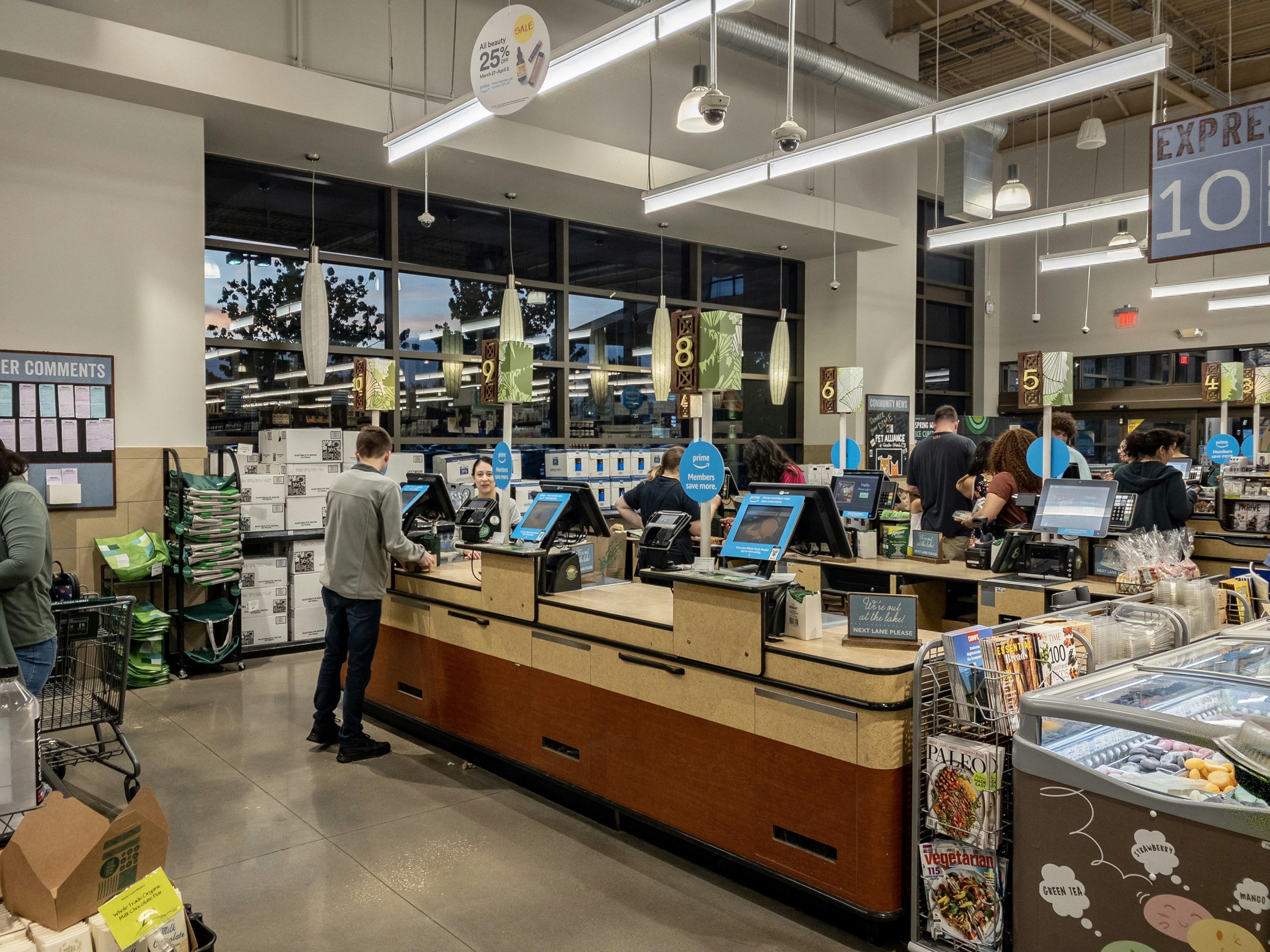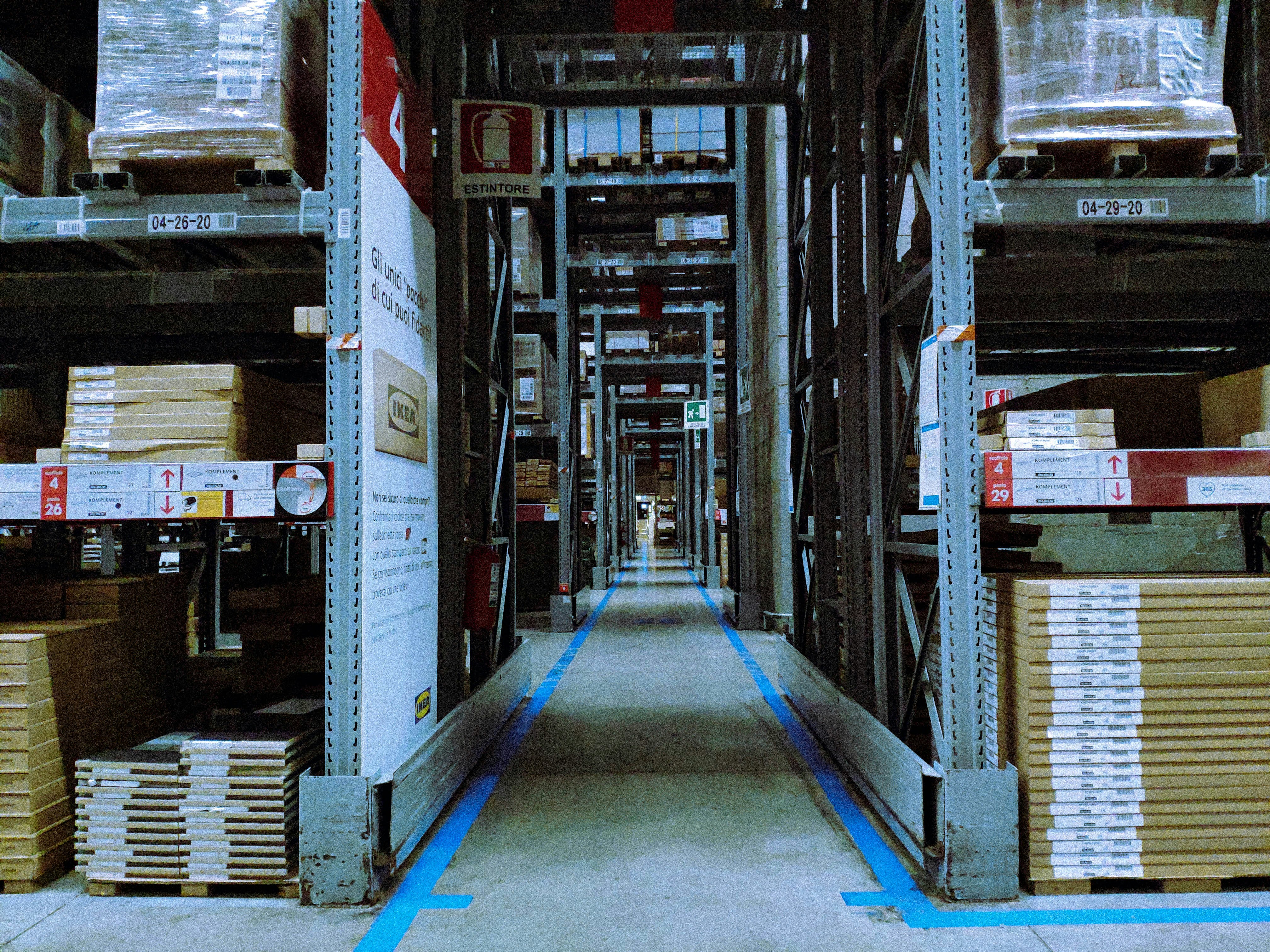Introduction to Barcode Technology
Barcode technology has transformed the way businesses manage product identification and inventory systems. At its core, a barcode is a machine-readable representation of data, typically encoded as a series of parallel lines and spaces that can be scanned and interpreted by special software and hardware. The origins of barcode technology can be traced back to the late 1940s, with the first patented design appearing in 1952. However, it wasn’t until the 1970s that barcodes began to gain widespread use in the retail sector.
A comprehensive barcode system consists of several essential components: barcode scanners, printers, and software. Barcode scanners are devices that capture and decode the information stored within a barcode, converting it into a format that can be processed by computers. These scanners can be handheld or fixed, with various options available for different environments, such as retail stores, warehouses, or even mobile applications. Barcode printers, on the other hand, are responsible for generating labels that display the barcode, often using thermal printing technology for durability and efficiency.
In addition to hardware, barcode technology relies heavily on software, which plays a crucial role in data management. Software solutions enable businesses to store, track, and analyze the information associated with barcodes, enhancing their overall operational efficiency. The use of barcodes facilitates rapid identification and tracking of products, thereby streamlining processes in various industries, including retail, logistics, healthcare, and manufacturing. By automating data entry and inventory management, organizations can not only reduce human error but also improve productivity and accuracy.
As barcode technology continues to evolve, its applications and benefits are becoming increasingly vital across various sectors, laying the groundwork for enhanced operational practices and better customer service.
The Current State of Barcode Usage in Latin America
The landscape of barcode adoption in Latin America has evolved significantly over the past few years, with an increasing number of industries recognizing the technology’s potential to enhance efficiency and traceability. According to recent studies, the retail and logistics sectors dominate barcode usage, driven by the need for inventory management and streamlined operations. For example, the implementation of barcodes has been instrumental in improving product tracking from warehouse to retail outlets, which is particularly relevant in countries like Brazil and Mexico, where retail growth is robust.
There are several types of barcodes in prevalent use, with the Universal Product Code (UPC) and the European Article Number (EAN) being the most common in retail environments. In contrast, the Code 128 barcode is frequently adopted in the logistics and shipping industries due to its ability to encode alphanumeric characters efficiently. Additionally, QR codes have gained traction in recent years, especially influenced by the rise of mobile technology and the COVID-19 pandemic, prompting businesses to adopt contactless solutions for customer interactions.
Regional differences in barcode adoption rates highlight varying maturity levels in technological integration across Latin America. Countries like Chile and Argentina have relatively high adoption rates, often attributed to their stronger infrastructure and commitment to technological advancements. Conversely, nations such as Bolivia and Paraguay are still in the early stages of embracing barcode technology, reflecting challenges in infrastructure and investment. A report by the Latin American Business Council (LABC) indicated that the region’s average barcode utilization is projected to grow by 15% annually as more businesses seek to capitalize on the benefits of this technology.
In summary, the current state of barcode usage in Latin America illustrates a dynamic and evolving landscape, characterized by diverse industry applications and varying adoption rates across the region. As businesses continue to recognize the value of barcode technology for operational efficiency, it is anticipated that this growth trajectory will persist, driving further advancements in various sectors.
Drivers of Barcode Adoption in the Region
The adoption of barcode technology in Latin America has seen significant growth, largely driven by various interrelated factors. One of the primary catalysts is the rapid expansion of the retail and e-commerce sectors. As consumers increasingly turn to online shopping platforms, businesses require efficient systems to manage their inventory and streamline logistics. Barcode systems provide the necessary tools to ensure accuracy in inventory tracking, thereby enhancing operational efficiency. This shift towards digital marketplaces has made it imperative for retailers to adopt solutions that facilitate swift transactions and accurate stock management.
Another factor influencing the adoption of barcodes is the growing need for improved inventory management solutions. Businesses in industries such as manufacturing, logistics, and retail are now prioritizing inventory accuracy to minimize losses and maximize profits. Barcodes simplify the tracking process, allowing organizations to monitor stock levels in real-time, conduct audits with ease, and reduce human error. As a result, companies are increasingly integrating barcode technology into their operations to gain a competitive edge and optimize overall performance.
Additionally, advancements in supply chain processes have spurred the demand for barcode systems across Latin America. Efficient supply chain management is pivotal for businesses aiming to meet customer demands while maintaining cost-effectiveness. Barcodes serve as a critical component in monitoring and managing the flow of goods from suppliers to consumers. By implementing barcode technology, companies can enhance their visibility throughout the supply chain, leading to improved forecasting and inventory turnover rates.
Finally, the influence of globalization and digital transformation cannot be overstated. As Latin American markets become increasingly interconnected with global trade networks, the need for standardization and efficiency has augmented. Barcodes facilitate compliance with international trade requirements while digitizing documentation processes. This evolution reflects a broader trend towards modernization that businesses in the region are keen to embrace, thereby solidifying the role of barcode technology in the evolving economic landscape.
Challenges in Barcode Implementation
The implementation of barcode systems in Latin America presents a myriad of challenges that hinder effective adoption across various sectors. One significant issue is the existing infrastructure limitations. In many regions, particularly rural and less developed areas, the necessary technological infrastructure to support barcode systems may be inadequate. This lack of robust internet connectivity and power supply can impede the functionality of barcode scanning devices and systems, ultimately affecting their reliability and efficiency.
High initial costs associated with acquiring barcode equipment and software also pose a barrier for many businesses. For small and medium-sized enterprises (SMEs) in Latin America, the financial burden of investing in barcode technologies can be daunting. This investment encompasses not only the purchase of hardware but also the necessary software solutions and employee training. These start-up costs can make companies hesitant to transition from traditional practices, where manual processes may seem less expensive in the short term.
Furthermore, a shortage of expert resources can complicate the situation. Many businesses lack access to skilled personnel who have experience with barcode implementation. The need for training and development in this area is pressing, yet there may be insufficient programs to meet the demand. Consequently, companies may struggle to fully utilize barcode technologies, leading to underperformance and a failure to realize expected efficiencies.
Moreover, resistance to change from traditional practices remains a significant challenge. In numerous instances, employees and management alike may be reluctant to adopt new technologies, preferring familiar manual processes. This cultural resistance can slow down the implementation of barcode systems, as organizations may not fully appreciate the benefits these systems can bring, such as improved accuracy and streamlined operations.
The culmination of these challenges can severely hinder the effective adoption of barcode systems in Latin America, underscoring the need for strategic approaches to address these issues comprehensively.
Case Studies: Successful Barcode Integration
The integration of barcode technology in Latin America has yielded numerous success stories that highlight its effectiveness across various sectors. One notable example is a leading retail chain in Brazil, which faced significant challenges related to inventory management. The problem primarily stemmed from outdated processes that often led to stock discrepancies and delayed product availability. By implementing a robust barcode system, the company streamlined its inventory tracking and greatly enhanced its operational efficiency. As a result, the retail chain reported a 30% reduction in stock discrepancies within the first year, considerably improving customer satisfaction.
Another remarkable case can be found in the healthcare sector, where a hospital in Argentina adopted a barcode system to manage patient records and medication administration. Prior to this implementation, the hospital experienced issues with medication errors and inefficiencies in patient data access. The transition to barcoded patient identification wristbands and medication labels enabled healthcare providers to quickly and accurately verify patient information and prescriptions. This led to a reported 40% decrease in medication-related errors, underscoring the critical role of barcode technology in enhancing patient safety and improving overall healthcare outcomes.
In the manufacturing industry, a company in Mexico that produced consumer electronics faced supply chain challenges due to lack of visibility in production processes. By introducing barcode scanning throughout its supply chain, the company was able to gain real-time insights into inventory levels and production timelines. This initiative not only improved operational transparency but also reduced lead times by 20%, thus enabling the company to respond more swiftly to market demands. These case studies clearly show that effective barcode integration can address specific challenges, leading to improved efficiency, safety, and customer satisfaction.
The Impact of Barcode Technology on Businesses
The adoption of barcode technology has significantly transformed how businesses operate in Latin America, leading to enhanced efficiency and improved accuracy in various processes. One of the most notable improvements attributed to barcode systems is operational efficiency. By automating data capture, businesses have minimized manual entry errors, thereby streamlining workflows. This automation allows employees to focus on more strategic tasks rather than spending valuable time on repetitive data input.
Moreover, barcode technology has proven instrumental in inventory management. Companies can now track their inventory levels in real-time, reducing instances of stockouts and overstocking. This optimized inventory management ensures that businesses maintain an adequate supply of goods, thereby meeting customer demand effectively. As a result, firms have witnessed significant cost savings and improved cash flow due to reduced excess inventory and associated carrying costs.
Another essential aspect of barcode adoption is the enhancement of customer service. With accurate and timely information about product availability and order status, businesses can provide a better shopping experience, thus fostering customer loyalty. In scenarios such as the COVID-19 pandemic, the agility offered by barcode technology allowed businesses to adapt swiftly to changing consumer behaviors. Companies implemented contactless transactions and improved their supply chain transparency, ensuring they could meet the challenges posed by economic instability.
In light of these benefits, it is clear that barcode technology has emerged as a critical asset for businesses in Latin America. The ability to reduce errors, enhance operational efficiency, and improve inventory management has provided businesses with a competitive edge in a rapidly changing market. As organizations continue to embrace this technology, it will likely play an even more significant role in shaping their future success.
Future Trends in Barcode Technology in Latin America
As technologies evolve, the landscape of barcode adoption in Latin America is anticipated to undergo significant transformations. One of the most notable trends is the increased utilization of QR codes. These codes have gained popularity due to their versatility and user-friendly nature. Businesses are leveraging QR codes not only for product labeling but also for marketing purposes, enabling consumers to access additional information about products and services through their mobile devices.
Mobile scanning capabilities are also on the rise, driven by the proliferation of smartphones across the region. With enhanced camera functionalities, smartphones can easily scan various barcode formats, simplifying inventory management and point-of-sale operations for retailers. Companies are increasingly integrating mobile scanning applications into their operations, which streamlines processes such as stocktaking and product tracking.
Another emerging trend is the adoption of RFID technology. Radio Frequency Identification (RFID) offers far more than traditional barcodes by providing real-time data on product location and status. This technology is proving beneficial for supply chain management, as it enhances visibility and efficiency. As industries such as logistics and retail continue to embrace RFID solutions, the overall operational effectiveness across the region is expected to improve significantly.
Moreover, the integration of barcode technology with Internet of Things (IoT) devices is set to revolutionize data collection and analysis. The combination of barcodes and IoT will allow businesses to gather and analyze real-time information about inventory levels and consumer behaviors, thereby facilitating more informed decision-making.
The convergence of these technologies presents numerous growth opportunities across various industry sectors in Latin America. As barcode technology becomes increasingly sophisticated, companies that adopt these innovations will likely gain a competitive edge in the marketplace.
Recommendations for Businesses Considering Barcode Systems
As businesses in Latin America consider adopting barcode systems, a structured approach is essential to ensure a smooth transition and maximized benefits. The first step involves evaluating specific needs. Companies should conduct a thorough assessment of their current operations and identify areas where barcode technology can streamline processes, enhance inventory management, and improve overall efficiency. This involves engaging employees from various departments to understand their pain points and expectations.
Following the evaluation phase, selecting the right technology is crucial. Businesses must consider factors such as the complexity of operations, budget constraints, and the scalability of the barcode system. Different industries may require varying types of barcode scanners and software solutions. For instance, retail businesses might benefit from compact handheld scanners, while warehouses may require rugged models designed for heavy-duty usage. It is advisable to consult with vendors and assess multiple options before making a decision.
Once the technology is selected, planning for implementation becomes the next priority. A detailed implementation plan should outline timelines, resource allocation, and potential impacts on daily operations. It is vital to communicate this plan across all levels of the organization to ensure a unified understanding of the transition process. Adequate training for staff cannot be overstated, as personnel should be proficient in utilizing the new systems. Organizing hands-on training sessions and providing user-friendly manuals can significantly ease this transition.
Lastly, measuring success is critical to determine the effectiveness of the barcode system adopted. After implementation, businesses should establish key performance indicators (KPIs) to track improvements and areas for further development. Regularly reviewing these metrics will help organizations understand the return on investment and make necessary adjustments, ensuring that the barcode system aligns with evolving operational needs.
Conclusion: The Way Forward for Barcode Technology in Latin America
In concluding our exploration of barcode adoption in Latin America, it is evident that this technology is transforming the business landscape in profound ways. Companies across various sectors are embracing barcode systems to enhance operational efficiency, reduce errors, and improve customer experiences. The trend towards modernization, driven largely by the need to compete in an increasingly globalized market, highlights the critical role that barcode technology plays in achieving strategic objectives.
Investment in barcode systems not only streamlines supply chain processes but also ensures compliance with international standards. As businesses in the region seek to align with global practices, continuous improvements in technology and infrastructure become essential. By doing so, they can avoid falling behind competitors in other parts of the world where barcode technology is already firmly established.
The benefits of barcode technology extend beyond immediate operational enhancements; they also contribute to long-term growth and scalability. As firms adopt these systems, they gain access to more sophisticated data analytics, enabling better decision-making and strategic planning. This shift represents a substantial advantage for businesses looking to innovate and respond rapidly to market changes.
Moreover, it is crucial for stakeholders, including governments and private enterprises, to collaborate and foster an environment that encourages technological adoption. By prioritizing training and support for businesses adopting barcode solutions, there is potential for substantial economic impact across the region.
In summary, the adoption of barcode technology is not just a trend, but rather a necessary evolution for businesses in Latin America aiming for longevity and competitiveness. With the ongoing trends and the growing impact of technology within the region, organizations must recognize and embrace barcode technology as a fundamental step towards future success.
© barcodly.com- All rights reserved





